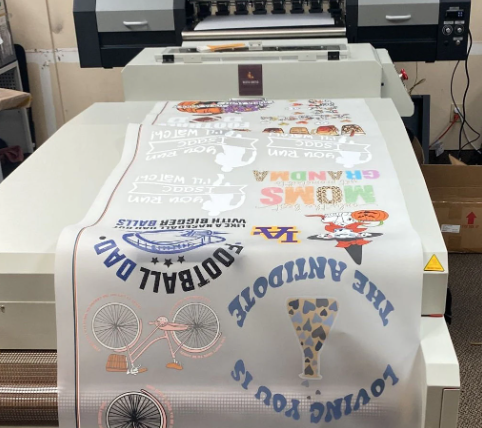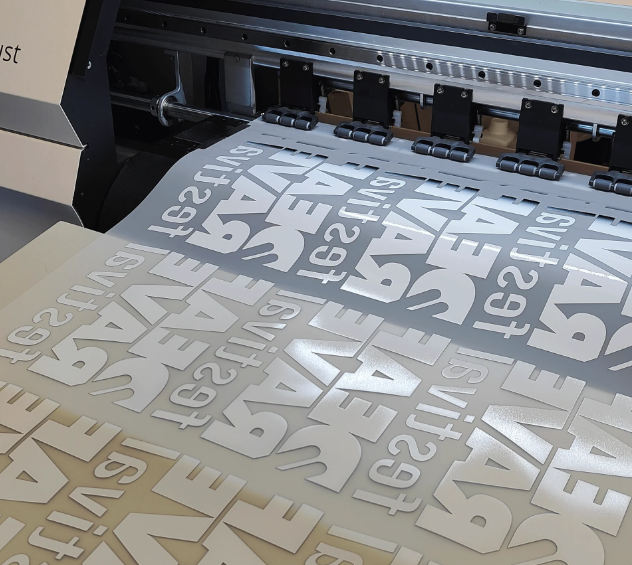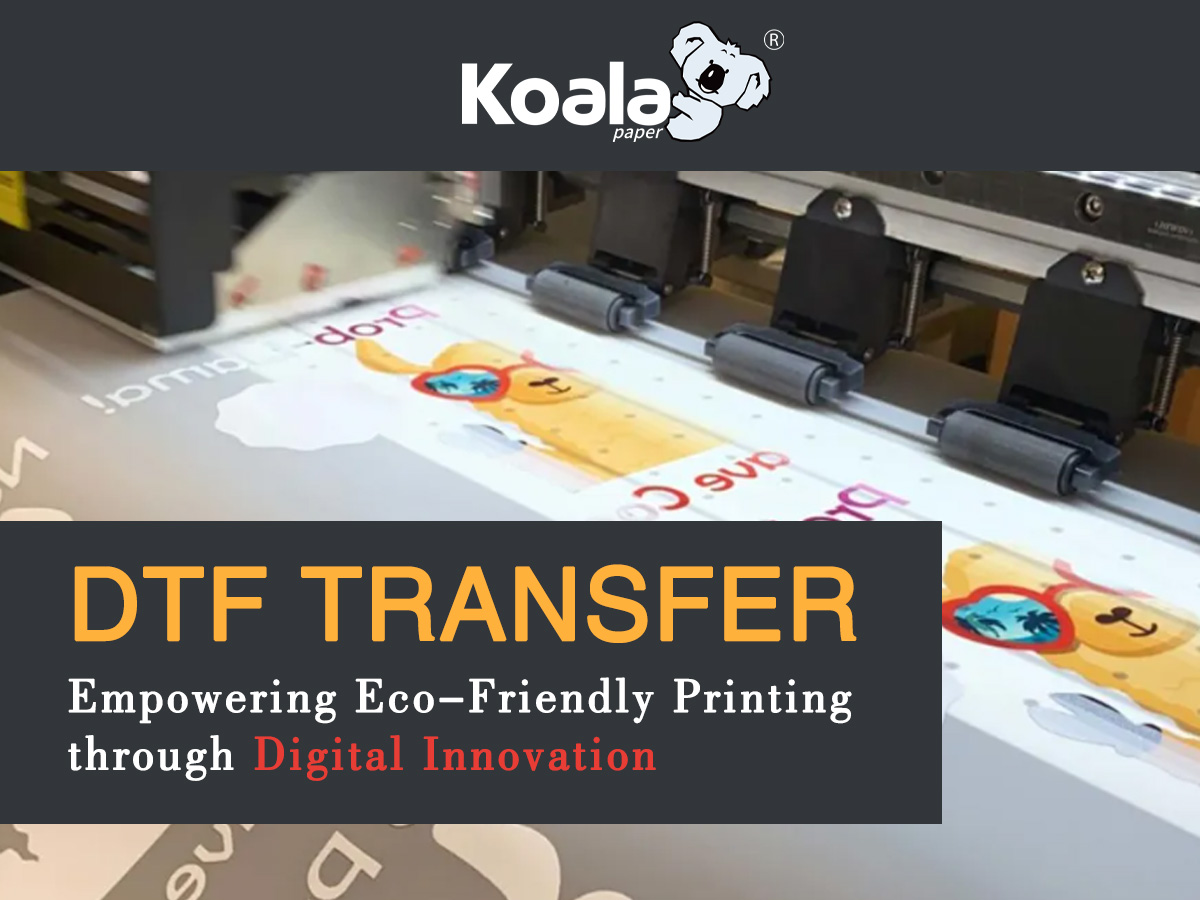In today’s printing industry, there is a growing emphasis on eco-friendly practices and the need for digital innovation. One such innovation that is gaining popularity is DTF transfer. DTF, or Direct-to-Film transfer, is a revolutionary printing method that combines the benefits of digital technology with sustainable printing practices.
Understanding DTF Transfer

DTF transfer is a revolutionary printing method that involves printing designs onto a specialized film using DTF powder, which is then transferred onto various surfaces using heat and pressure. Unlike traditional printing methods, DTF transfer eliminates the need for intermediate steps like screens or plates, making it highly efficient and cost-effective.
To begin the DTF transfer process, the design is first printed onto a thin, flexible film using digital printing technology. However, what sets DTF transfer apart is the use of DTF powder. DTF powder is a unique powdered adhesive that is applied to the printed design on the film. This powder acts as a bonding agent between the film and the target material.
Once the design is printed and the DTF powder is applied, the film is carefully placed onto the desired surface. The transfer of the design from the film to the material occurs through the application of heat and pressure. The heat activates the DTF powder, causing it to melt and adhere to the surface, forming a strong and durable bond. After the transfer process, the excess DTF powder is removed, leaving behind a vibrant and long-lasting print.
One of the key advantages of DTF transfer is its sustainability and eco-friendliness. By using digital printing technology and DTF powder, DTF transfer reduces waste and eliminates the use of harmful chemicals typically associated with traditional printing methods. DTF powder is formulated to be eco-friendly, ensuring minimal impact on the environment.
Compared to traditional methods that require screens or plates and involve the use of chemicals, DTF transfer offers a more streamlined and environmentally conscious approach. The elimination of screens and plates reduces material consumption and waste generation. Additionally, the absence of harmful chemicals in DTF powder contributes to a safer and greener printing process.
By embracing DTF transfer, businesses can not only achieve high-quality prints but also contribute to a more sustainable printing industry. The combination of digital printing technology and the elimination of intermediate steps and harmful chemicals make DTF transfer an attractive choice for those seeking eco-friendly printing solutions.
Eco-Friendly Benefits of DTF Transfer

DTF transfer offers several environmental benefits compared to traditional printing techniques. Firstly, it significantly reduces waste by eliminating the need for screens or plates, minimizing material consumption.
Secondly, DTF transfer requires less energy compared to traditional methods, thanks to its streamlined process. This reduction in energy consumption contributes to lower carbon emissions and a smaller ecological footprint.
Additionally, DTF transfer eliminates the use of harmful chemicals such as solvents and inks containing volatile organic compounds (VOCs). This makes it a safer and more sustainable option for both the environment and the printing professionals.
Digital Innovation in DTF Transfer

Digital innovation plays a crucial role in enabling DTF transfer. Advancements in digital printing equipment and software have made it possible to achieve high-quality results with precision and accuracy. These innovations have also made the process faster and more efficient, saving both time and resources.
With digital printing technology, designers can create intricate and vibrant designs that were previously challenging to achieve with traditional printing methods. This opens up new creative possibilities and allows for customization on a greater scale.
Applications and Versatility of DTF Transfer

DTF transfer finds applications across various industries, including apparel, home decor, and promotional products. It offers versatility in printing on a wide range of materials such as fabrics, leather, ceramics, glass, metals and plastics. This flexibility makes it an attractive choice for businesses looking to expand their product offerings and cater to diverse customer demands.
Future Implications and Adoption of DTF Transfer

The future of DTF transfer looks promising, with the potential for wider adoption in the printing industry. Manufacturers, businesses, and consumers are increasingly recognizing the importance of eco-friendly printing practices and are driving the shift towards sustainable alternatives like DTF transfer.
As technology continues to evolve, we can expect further advancements in DTF transfer, such as improved ink formulations, better film materials, and enhanced printing equipment. These developments will further enhance the quality, efficiency, and sustainability of DTF transfer.
KoalaPaper: Championing Environmental Sustainability

KoalaPaper is a renowned company that takes pride in its commitment to environmental sustainability throughout the DTF transfer process. From the selection of raw materials to the production of high-quality prints, KoalaPaper consistently upholds eco-friendly principles.
●Thoughtful Raw Material Selection
At the core of KoalaPaper’s environmental initiatives is the careful selection of raw materials. Our company prioritizes sourcing materials that are sustainable, renewable, and have minimal impact on the environment. By opting for eco-friendly materials, KoalaPaper reduces its carbon footprint and contributes to the preservation of natural resources.
●High-Quality Materials for Superior Prints
KoalaPaper understands the importance of delivering exceptional print results while minimizing environmental impact. To achieve this, our company uses high-quality materials in its DTF transfer films. These films are carefully engineered to ensure optimal ink adhesion, vibrant colors, and long-lasting durability. By prioritizing quality, KoalaPaper reduces the need for reprints and waste, further promoting sustainability.
●Innovation in Eco-Friendly Formulations
In its pursuit of eco-friendly printing solutions, KoalaPaper invests in research and development to create innovative formulations. Our company constantly explores new technologies and materials that allow for greener printing processes. By staying at the forefront of technological advancements, KoalaPaper continues to refine its products, offering customers cutting-edge solutions that prioritize both quality and sustainability.
● Environmental Certifications and Standards
KoalaPaper is committed to meeting and exceeding environmental certifications and standards. Our company complies with regulations and industry guidelines to ensure that its operations align with the highest environmental standards. By adhering to these certifications, KoalaPaper provides customers with the assurance that their printing needs are met with environmentally responsible solutions.
With its unwavering dedication to environmental sustainability, KoalaPaper has established itself as a leader in the eco-friendly printing industry. Our company’s commitment to choosing high-quality materials, investing in research and development, and meeting environmental certifications sets a benchmark for others to follow. By partnering with KoalaPaper, businesses can confidently embrace DTF transfer while minimizing their environmental impact.
Conclusion
In conclusion, DTF transfer offers significant benefits for eco-friendly printing. Its sustainable practices reduce waste, energy consumption, and the use of harmful chemicals. By adopting DTF transfer, businesses can minimize their environmental impact while delivering high-quality prints.
We encourage readers to explore DTF transfer as a greener alternative in their printing endeavors. Together, we can contribute to a more sustainable and environmentally conscious printing industry.
